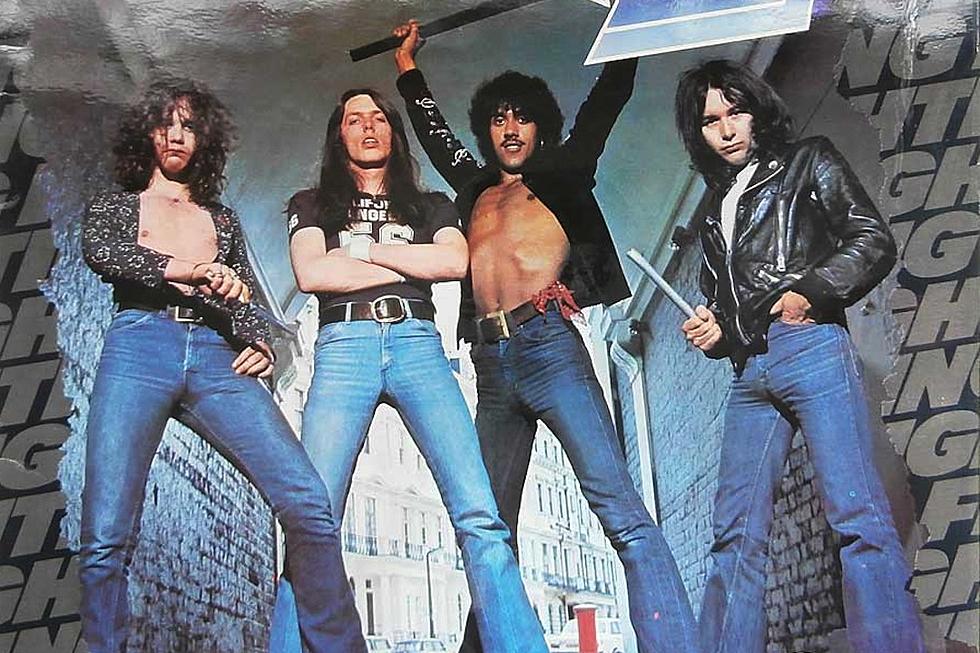
How Thin Lizzy Set the Stage for a Breakthrough With ‘Fighting’
Thin Lizzy released their fifth album on Sept. 12, 1975, but Fighting may as well have been their first considering all the challenges it overcame.
After a convoluted couple of years that saw Thin Lizzy losing their guitarist and then his fill-in, followed by their record deal, they nearly broke up several times over. Yet, Thin Lizzy had simply refused to give up, as the aptly titled Fighting demonstrated. It also provided some long-needed clarity on the band's future musical exploits.
This revival had begun in earnest with Thin Lizzy's previous album Night Life, released one year prior, where they officially expanded from a three- to a four-piece. But because parts of Night Life had been recorded with guitarist Gary Moore, co-founder Eric Bell's first replacement, the newly installed twin-guitar team of Californian Scott Gorham and Glaswegian Brian Robertson really didn't get a chance to gel with each other with vocalist/bassist Phil Lynott and drummer Brian Downey until they hit the road. Opening dates followed with Bachman-Turner Overdrive, among others.
So, Fighting was the first full work captured by the classic Thin Lizzy quartet, and then-manager Chris Morrison claims some of the credit for inspiring its tough-as-nails attitude.
"I realized that whenever Philip's aggression came through the crowd went wild," Morrison said in Mark Putterford's definitive Lynott biography The Rocker, "yet whenever he trailed off into some of his more sentimental moments [they] didn't respond as well. After the show, I encouraged him to concentrate on the macho side of his image [and] I'd like to think Philip took my advice [for] Fighting."
The album launched with a cover of Bob Seger's "Rosalie," which spoke to Thin Lizzy's unproven commercial potential at the time. They no doubt were hoping for an easier route into the charts. But the ensuing "For Those Who Love to Live" was all about showcasing just how seamlessly Gorham and Robertson's guitar harmonies could be integrated into Thin Lizzy's sound.
It helped that Phil Lynott's songwriting skills were reaching peak form, as evidenced by the trio of songs that followed – the noir-like storytelling of the otherwise rather morbid "Suicide," the deep longing of the gorgeous "Wild One" and, by contrast, the brawling challenge of "Fighting My Way Back," which brilliantly backed its ringing power chords with funky Superfly licks.
Side two, by turns, boasted the alternately gentle and bombastic medieval tale of "King's Vengeance," the somber crawl of "Spirit Slips Away" (recalling the band's hit-and-miss Decca years) and the easy swinging of Robertson's "Silver Dollar," before closing strong on the anthemic "Freedom Song" and Gorham's romanticized summation of Lynott's tough-guy persona in "Ballad of a Hard Man."
The music was accompanied by two entirely different, but similarly rumble-inciting band cover photos chosen for the U.S. and global releases. That also helped establish the perception that Thin Lizzy's new lineup was indeed a gang, ready to bust chops and crack skulls in the name of hard rock.
Fighting became the first Lizzy album to crack the U.K. charts, peaking at No. 60 – still rather modest, but obviously encouraging. Fighting lacked some of the final ingredients that would define Thin Lizzy's legacy for the ages, but it was a credible setup for the band's next effort, Jailbreak – which finally gave Lynott and company the true breakthrough they'd been working for. It's the sound of a band coming into their own.
Thin Lizzy Albums Ranked
More From Ultimate Classic Rock









